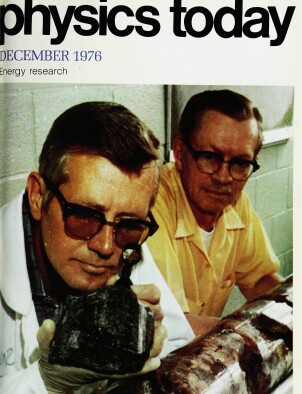Energy research for physicists
DOI: 10.1063/1.3024636
The shortage of energy resources is both an urgent national problem and a challenging research field for physicists. The challenge lies not only in the technical problems to be solved but also in the need to interrelate the technical solutions with economic, political and environmental factors. The physicist may have to adapt in several ways to this new interdisciplinary atmosphere. However, many have already made the transition successfully, either in short‐term advisory roles or as permanent members of energy‐studies teams. The extensive shopping list of energy problems to which a physicist can contribute include conservation, coal technology, fission and fusion. Suffice it here to discuss interesting aspects of wind, solar and geothermal energy as only three examples and to illustrate ways in which just one branch of physics—fluid dynamics—can contribute.
This article is only available in PDF format
References
1. Topical Conference on Energy, AIP Conference Proceedings No. 19 (1974).
2. Technical Aspects of Efficient Energy Utilization, AIP Conference Proceedings No. 25 (1974).
3. Report to The American Physical Society by the Study Group on Light‐Water Reactor Safety, American Institute of Physics, 28 April 1975.
4. Bulletin of the Atomic Scientists, May 1975.
5. L. Hammond, Science 190, 257 (1975).https://doi.org/SCIEAS
6. R. Winston, Solar Energy 16, 89 (1974); https://doi.org/SRENA4
A. Rabl, Argonne National Laboratory Report SOL 75‐02, 1975.7. C. Zener, PHYSICS TODAY, January 1973; page 48.
8. Report NSF/RANN/SE/GI‐3914/PR/74/6, Carnegie‐Mellon University, 31 January 1975.
9. Modern Energy Technology, Volume II, Staff of Research and Education Association, New York (1975); page 1618.
10. M. C. Smith, “Geothermal Power” in AIP Conference Proceedings No. 19 (1974).
11. “Assessment of Geothermal Resources of the US—1975,” Geological Survey Circular 726.
More about the Authors
George T. Reynolds. Professor of Physics, Princeton and a member of the University's Center for Environmental Studies.




